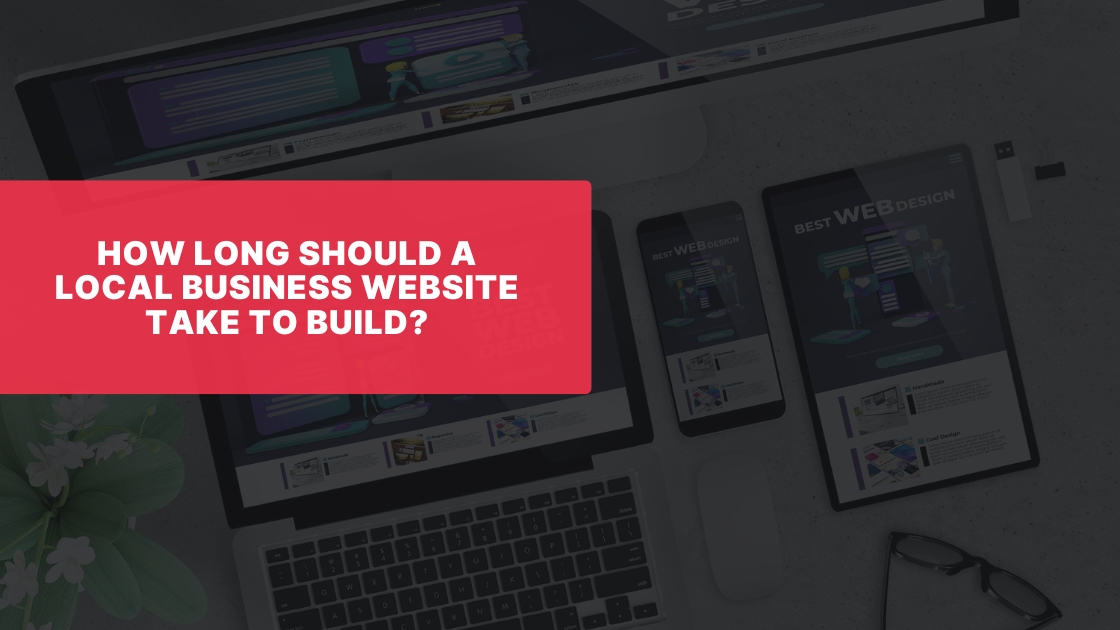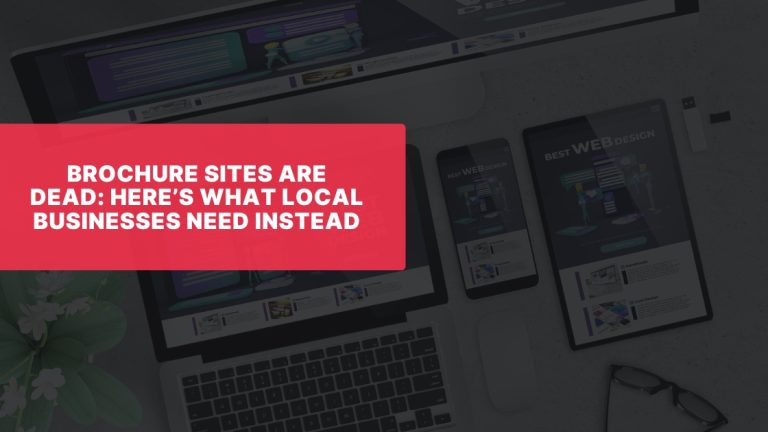If you’re thinking about getting a new website for your business, one of the first questions you’ll have is: how long will it take?
The answer depends on a few factors – but the good news is, it doesn’t need to take forever. In fact, most local business websites can be up and running in just a couple of weeks with the right plan.
In this article, we’ll break down what affects the timeline, what’s realistic, and how to make sure your project stays on track from start to finish.
The average timeline for a local business website
For a standard 5-page brochure-style website (Home, About, Services, Testimonials, Contact), the typical build time is:
- DIY build: 2 to 8 weeks, depending on your time, skills and the platform you use
- Freelance designer: 1 to 3 weeks, depending on content readiness and revisions
- Web agency: 3 to 6 weeks, depending on team size, processes and scope
If you’re looking for something more advanced, like booking systems, e-commerce or multi-location SEO pages, expect things to take a bit longer – usually 4 to 8 weeks total.
What affects how long it takes?
Here are the biggest factors that impact your website timeline:
1. Content readiness
This is the number one delay in most projects. If you’re still writing your service descriptions or waiting for team photos, your project will stall.
Speed tip: Prepare your content early – text, images, logos and any downloads you want on the site.
2. Design and approval time
Some people want a quick, clean layout. Others want something unique and custom. The more back-and-forth during the design stage, the longer it takes.
Speed tip: Choose 1 or 2 example sites you like and be clear on your must-haves.
3. Number of revisions
Most designers offer 1 or 2 rounds of revisions. If you keep changing your mind or adding new pages halfway through, things slow down.
Speed tip: Be decisive. Stick to the original plan unless something really isn’t right.
4. Functionality needed
Simple sites are faster to build. If you’re adding forms, booking tools, membership areas or e-commerce features, there’s more testing and setup required.
Speed tip: Start with the essentials. You can always add more later.
5. Communication and feedback
Delays often happen when emails go unanswered or feedback takes a week to arrive. The faster you respond, the faster your site gets built.
Speed tip: Set aside 15 minutes each day to check in on progress and respond quickly.
DIY vs. professional build time
If you build the site yourself, you can go as fast (or slow) as you like. But most DIYers underestimate the time it takes. Choosing a platform, writing content, tweaking layouts and learning how to use everything can easily stretch into weeks.
Hiring a professional often means faster results – not just because they work quicker, but because they already know the best way to build a site that works. They’ll take care of the structure, layout, mobile responsiveness, SEO basics and more.
Realistic timelines by website type
Here’s a quick breakdown of how long different types of local business websites usually take:
Basic 1-page site: 3 to 5 days (with content ready)
5-page brochure site: 1 to 3 weeks
Service site with booking forms: 2 to 4 weeks
E-commerce site (10 to 20 products): 3 to 6 weeks
Advanced/SEO-heavy site: 4 to 8 weeks
How to speed things up without cutting corners
Want your website live sooner rather than later? Here’s how to avoid unnecessary delays:
1. Get your content ready first
Write your headlines, service descriptions, FAQs and contact info in a document. Gather logos, images and testimonials. This speeds things up massively.
2. Keep it simple to start
You don’t need 15 pages on day one. Focus on the core pages that explain who you are, what you do and how to get in touch.
3. Choose the right partner
Work with someone who understands small businesses and has a track record of delivering on time. Ask about their process and what they need from you.
4. Use templates or starter packs
Many pros offer pre-built layouts or packages that get you online faster without sacrificing quality.
5. Stick to the plan
Scope creep – adding more stuff mid-project – is the number one cause of delays. Finalise your plan, then let the designer do their thing.
What to watch out for
If your website is taking months with no sign of launch, something’s gone wrong. Red flags include:
- No clear project timeline
- Waiting weeks for simple updates
- Constant changes to the design brief
- Missing content or unclear feedback
If that sounds familiar, it might be time to revisit the scope or switch providers.
Final thoughts
A well-built local business website doesn’t need to take forever. With the right preparation and the right person (or team) behind it, you can be up and running in as little as a week or two.
Focus on clear messaging, fast mobile design and a simple path for visitors to contact you. Keep your content ready, respond quickly and stick to the plan – and your site will launch faster than you think.
At Strategy8, we specialise in building affordable, high-converting websites for small businesses across the UK. Most of our sites go live in 7 to 14 days. If you want a no-fuss website that’s built to perform and doesn’t drag on for months, get in touch today.




